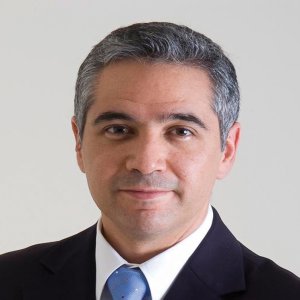European Models Take on Big-Nose Truck Dominance

STORY INLINE POST
Q: How have you taken on the challenge of getting Mexican customers to buy European vehicles over traditionally favored US models?
A: Many Mexican drivers see the big-nose vehicle as offering more protection in case of an accident. However, the public tends to see these larger trucks as being more dangerous. Regulations in Mexico are also changing, with many states trying to reduce the prevalence of big double-trailer vehicles. Some companies are starting to only use bigger trucks for long-distance jobs and choose different products for the shorter journeys. This is where our products have the edge. They offer greater maneuverability, and huge trailers are unnecessary for transporting smaller loads. Customers like bread companies or plastic companies do need huge trucks. Removing weight from the nose allows for greater weight to be placed in the cargo hold. Our trucks also have the same hauling capabilities as the big-nose models because of their engine power.
Q: Mexico has a crowded heavy vehicle segment. What makes MAN Truck & Bus feel it can succeed here?
A: It will certainly be critical for us to take on our competition here. Almost all truck brands are present in Mexico, and even Chinese brands are beginning to make inroads into the US market. Quantity alone does not lead to success here as the most important factor is the specialization of the products. The truck segment in Mexico resembles the American market with big-nosed trucks being the most popular vehicles. When we entered Mexico in 2004, the market thought we would struggle as our vehicles were totally different. Another major consideration in Mexico is price. To be competitive on cost means developing a production facility for parts to serve the North American market. Finally, almost all truck companies here have the capacity to export vehicles across South America. Our competitors have huge factories here exporting to North and Latin America. This makes it extremely important for us to be here.
Q: MAN Truck & Bus has set itself the target of increasing sales by 60% in Mexico. What steps need to be taken for this to happen?
A: We used to be present in just two market segments, but between 2012 and 2014, we launched ten new products that put us in almost all market segments. Starting from the Class 5 on up, MAN Truck & Bus now covers all trucks above 8 tonnes. This has led to different situations in different segments. We started in the big coach segment five years ago, and we are present there with almost all of the big players. We need to work to improve our brand awareness and position our products for the middle range segment. This is particularly important as this segment covers buses between 12 and 17 tonnes as well as trucks between 13 and 26 tonnes, covering Classes 7 and 8, and represents almost 60% of the market. We introduced the TGX truck to Mexico and it has proven to be a particularly popular vehicle for bread transportation. This is an example of how our vehicles offer something new. Many companies transport more volume than weight and our vehicles allow a 26% increase in volume capacity, which is coupled with a 5-10% improvement in fuel consumption based on our Euro V engines.
Q: How are you tailoring your products for the local market?
A: Our chassis are extremely robust, which is vital in a market where little attention is paid to vehicle use and care. Mexico has many passenger and goods vehicles that are routinely overloaded. We install all the technology developed in Europe, such as the Intarder transmission brake, which generates 25% more braking efficiency. Three years ago, we changed our engine range so 80% of our vehicles used MAN engines. All our engines are developed in Germany but some of them are produced in Brazil, using two main technologies: the American EGR (exhaust gas recirculation) engines, and the European SCR (selective catalytic reduction) engines with AdBlue. We were the first company in the MAN group to use Volkswagen engines with a MAN chassis, and we were forced to develop in this way in the Mexican market as we did not have access to the four-cylinder Cummins engine for the Euro IV regulation.
Q: What are your main goals for 2014?
A: We will be focusing on the middle-range segment and on improving distribution, while also improving our positioning in the large fleet segment. We currently have the capacity to reach 2,800 units a year, which gives us plenty of room to grow.




















